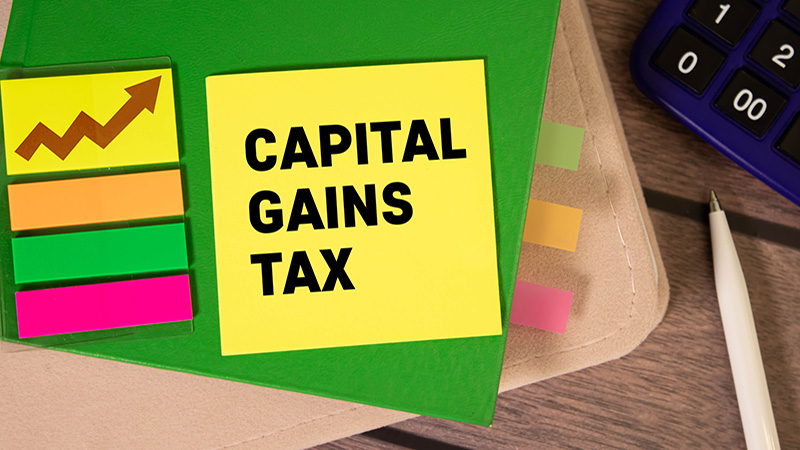Following 2023’s Spring Budget, capital gains tax exemptions for the 2023/24 tax year were lowered from £12,300 to £6,000, with a second reduction for 2024/25 to £3,000. For investors going beyond their pension and ISA capacities, this could lead to preferences for funds which don’t expose them to additional taxation.
This has therefore created a new dynamic in the decision-making process between using a multi-asset fund and a model portfolio service (MPS). While, within multi-asset mandates, trading occurs entirely within the fund, with no direct trading from the investor, model portfolio services are tracked as the individual investor making changes to their investments each time the holdings shift.
While these funds would be exempt from capital gains tax if they are within a pension or ISA, if they are instead held in a general investment account, the trading occurring within an MPS would be subject to capital gains tax if it exceeds the new limits of £6,000 and soon-to-be £3,000. Meanwhile, trading within a multi-asset fund would be unaffected for the end investor.
Gillian Hepburn, commercial director at Benchmark Capital, said: “If you’re holding the MPS, just within a general investment account, then that is subject to capital gains tax every time the model rebalanced, or if you sell out of the model, for example.
“So, you could argue that when you’re giving financial advice, you need to think very carefully about whether the client is likely to be subject to capital gains tax.”
In calculations by Hepburn, the maximum this would add to a higher-rate tax payer would be £1,260 for the 23/24 year, and £1,860 for the 24/25 year.
“What we’ve seen is, many advisers will always fill up the pension bucket, and then the ISA, and then the general investment account,” Hepburn said.
“The challenge is that, with capital gains tax allowances reducing, there will be more people who are likely to have to pay capital gains tax if they’re holding a model portfolio within a general investment account. This is one of the reasons that we think that more clients are moving towards using multi-asset funds.”
Simon Evan-Cook, founder and fund manager of the VT Downing Fox Funds, said when he was setting up his new product and deciding whether to launch an MPS or a fund of funds, the implications of capital gains tax was a key deciding factor.
“Having recently set up from scratch, I had the choice of going down the MPS route or launching a fund of funds range instead. I chose the latter because I genuinely believe they are by far the better option for advisers and their clients,” Evan-Cook said.
“CGT is one of the big reasons for this. Within our funds of funds, when I sell a holding I can do so safe in the knowledge that it will have no CGT implications for any of its holders, regardless of whether they hold it in a tax wrapper or not.
“This is not the case when running a non-unitised portfolio like an MPS or most DFM offerings, where selling a large holding that has gained a lot over the years may inflict painful tax implications.”
While the fund managers themselves are not responsible for the tax implications for investors, advisers who are choosing funds for investors are holding these factors in close consideration.
“From an adviser’s perspective, unwittingly triggering a needless tax liability is not a great look, particularly for their largest and most valuable clients,” Evan-Cook said.
“The risk of doing this is considerably lower when holding a fund of funds instead of an MPS. This is a factor we know many advisers are thinking more about, and is partly why the pendulum is, we think, beginning to swing back towards unitised portfolio offerings such as funds of funds.”
MPSs gained popularity due to their transparent nature, with investors able to see a full breakdown of their underlying investments at any one time rather than relying on a quarterly, or monthly statement. There are pros and cons to both, with investors in an MPS owning the underlying units of these holdings themselves, but paying a management fee plus the charges from the underlying funds. The costs of managing a fund of fund is packaged up into its ongoing charges figure.
For advisers, concerns around switching out of an MPS and into a multi-asset fund would likely only come after clients had maxed out their ISA allowance of £20,000. The same is true of their clients’ pensions, which have an annual tax-free allowance of £60,000 from April 2024, up from £40,000 previously. This number does however reduce for those with an income over £260,000, whose allowance decreases by £1 for every £2 above the threshold up to £320,000 in income. Funds left over after these categories would likely fall into general investment accounts.
Jock Glover, strategic relationships director at Square Mile Investment Consulting and Research, said: “It does mean that the tax burden could be substantial because, at the start of the reduction process, HMRC was estimating another 235,000 people will end up reporting CGT. Their estimate was that by 2025 these tax changes would generate another £1.2bn for the Treasury.
“In other words, for an MPS manager, it isn’t their role to worry about the tax planning for the underlying client. That is the role of their adviser. In terms of the impact on the underlying clients, it will depend on what wrapper their assets are in. If their MPS is wrapped in a tax efficient vehicle like a SIPP or an ISA, then there is no impact, under the current tax rules. If it is held in a general account, then they, or their adviser, will need to manage any capital gains that are created over the course of a tax year by the underlying manager selling holdings from the portfolio.”






